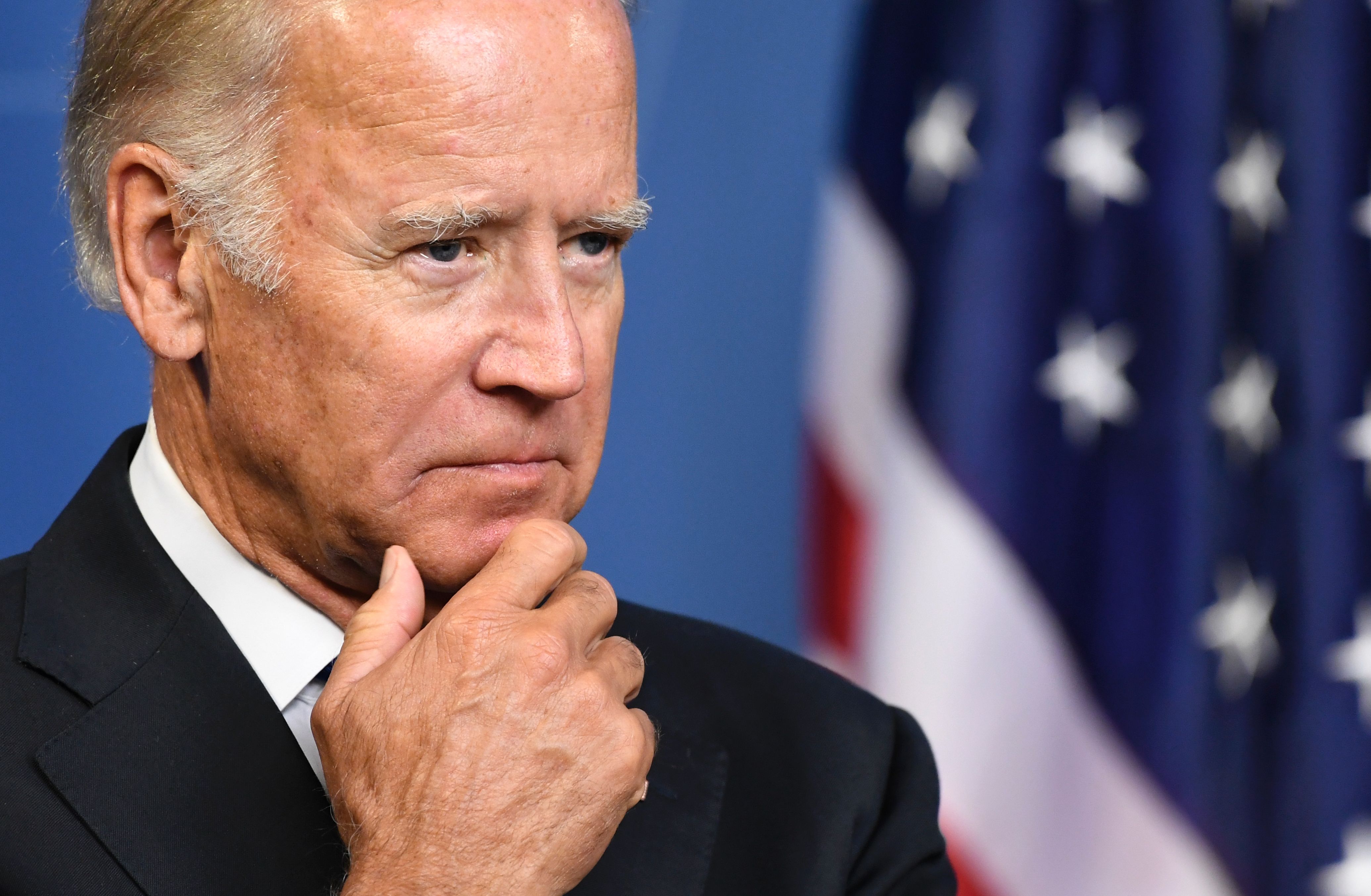Joe Biden's Responses: A Critical Examination

Table of Contents
Domestic Policy Responses
The Economic Response to Inflation
Biden's economic responses to the surge in inflation have been a central focus of debate. His administration implemented the Inflation Reduction Act, a sweeping piece of legislation aimed at lowering healthcare costs, investing in clean energy, and addressing climate change – all with the indirect goal of curbing inflation. However, the impact on gas prices and the overall inflation rate has been complex and subject to differing interpretations.
- Inflation Reduction Act: While the Act aims to reduce the deficit and invest in clean energy, its direct impact on inflation remains a point of contention among economists. Some argue its long-term benefits outweigh short-term inflationary pressures, while others criticize its potential to exacerbate existing issues.
- Impact on Gas Prices: The administration has implemented strategies to increase domestic oil production and release oil reserves, aiming to lower gas prices. However, global factors and energy market dynamics have complicated these efforts.
- Critiques from Economists: Critics point to the Act's spending as inflationary, arguing that it increases demand without addressing supply-side constraints. Others question the effectiveness of certain provisions in achieving their stated goals.
- Success Metrics: Measuring the success of Biden's economic policies requires careful consideration of multiple factors, including GDP growth, job creation, and the inflation rate itself. Interpretations of these metrics often vary depending on political viewpoints.
Alternative approaches, such as focusing solely on supply-side solutions or implementing more aggressive monetary policy tightening, have been suggested by some economists. The effectiveness of these alternatives remains a topic of ongoing discussion and research within the field of economics. A thorough analysis of Biden's economic responses is crucial to understanding the complexities of economic policymaking in a volatile global environment.
Responses to Gun Violence
Biden's approach to gun control reflects a long-standing commitment to reducing gun violence. His administration has pursued both legislative and executive actions. However, the deeply partisan nature of gun control debates has significantly hampered progress.
- Executive Orders: Biden has issued executive orders aimed at strengthening background checks and reducing the availability of untraceable firearms. These actions, however, have been criticized as insufficient by gun control advocates and challenged in court by gun rights organizations.
- Legislative Proposals: The administration has pushed for comprehensive gun control legislation, including bans on assault weapons and red flag laws, facing significant obstacles in a closely divided Congress.
- Public Reaction: Public opinion on gun control remains deeply divided, with strong support from some groups and staunch opposition from others. This polarization has made enacting significant legislative changes extremely difficult.
- Limitations Faced: The Second Amendment to the US Constitution and the influence of powerful lobbying groups have presented significant limitations to Biden's efforts to enact comprehensive gun control measures.
A comparison with previous administrations reveals a pattern of incremental progress, with significant legislative victories remaining elusive. A deeper understanding of Biden's gun control efforts requires consideration of the political landscape and the entrenched positions of various stakeholders. Analyzing Biden's gun control strategies requires a nuanced understanding of the constitutional rights, political divisions and the scale of the gun violence crisis itself.
The Response to the Southern Border Crisis
The Biden administration's immigration policies have faced intense scrutiny, with the situation at the southern border being a major point of contention. His administration's approach contrasts sharply with the previous administration's stricter policies.
- Border Wall Policy: Unlike his predecessor, Biden halted construction of the border wall, shifting the focus towards border security through technology and increased personnel.
- Asylum Seekers: The administration has sought to address the backlog of asylum cases and improve processing procedures. However, the influx of asylum seekers and the challenges of processing their claims have presented ongoing logistical and humanitarian challenges.
- Challenges Faced by Border Patrol: Border Patrol agents face immense pressure due to the large number of border crossings and the complexities of managing the influx of migrants.
- Public Opinion on Immigration: Public opinion on immigration is highly polarized, with diverging views on border security, asylum policies, and the overall handling of immigration issues.
The humanitarian and security aspects of the border crisis are intertwined, requiring a comprehensive approach that balances border security concerns with the humane treatment of asylum seekers. Analyzing Biden's immigration policy requires a multifaceted understanding of the legal, political, and ethical dimensions of the issue. A comprehensive assessment of Biden's immigration policy requires consideration of its implications for both national security and humanitarian concerns.
Foreign Policy Responses
Response to the War in Ukraine
Biden's response to Russia's invasion of Ukraine has been a defining moment of his presidency. He has spearheaded an international coalition to support Ukraine's defense.
- Sanctions Imposed: The US, under Biden's leadership, has imposed sweeping sanctions on Russia's economy, targeting key sectors and individuals. The effectiveness of these sanctions continues to be assessed.
- Military Aid Provided: The US has provided significant military aid to Ukraine, including weapons, training, and intelligence support, playing a vital role in Ukraine's defense.
- Diplomatic Efforts: Biden has engaged in extensive diplomatic efforts with allies to coordinate the international response and maintain a unified front against Russia's aggression.
- International Cooperation: The response to the Ukrainian crisis has demonstrated significant international cooperation, with many countries joining efforts to provide aid and impose sanctions.
Different strategies employed, including the extent of military aid and the intensity of sanctions, have been debated among policymakers. A thorough analysis of Biden's Ukraine policy necessitates assessing its impact on the conflict, the geopolitical landscape, and the global economy. Analyzing Biden's Ukraine response requires a complex understanding of international relations, geopolitics, and the limitations of various policy instruments.
Responses to Global Challenges
Biden's foreign policy extends to a wide range of global challenges, reflecting his administration's commitment to multilateralism and international cooperation.
- Paris Agreement: The US rejoined the Paris Agreement on climate change, signaling a renewed commitment to international climate action.
- Vaccination Efforts: The Biden administration has played a significant role in global efforts to distribute COVID-19 vaccines, aiming to improve global health security.
- Trade Deals: The administration has pursued revised trade agreements, seeking to balance economic benefits with labor and environmental considerations.
- Global Partnerships: Biden has emphasized strengthening alliances and partnerships to address various global challenges, from climate change to pandemics.
Compared with other world leaders' responses, Biden's approach has been characterized by a strong emphasis on multilateralism and international cooperation. Analyzing Biden's global response demands a broad perspective, incorporating geopolitical contexts and the complexities of international relations. A comprehensive assessment of Biden's global responses necessitates considering the long-term implications for international relations and global governance.
Conclusion
This critical examination of Joe Biden's responses to various challenges reveals a complex picture. While some policies have garnered praise for their ambition and progressive nature, others have faced criticism for their effectiveness and impact. Understanding the nuances of his responses, both domestic and foreign, is essential for a comprehensive understanding of his presidency. Further research and analysis are crucial to fully assess the long-term consequences of his decisions. Continued scrutiny of Joe Biden's responses will be essential for informed political discourse and effective governance. We encourage readers to continue examining Joe Biden's responses and engage in constructive dialogue about their effectiveness and implications.

Featured Posts
-
 Knicks Season Finale Jalen Brunson Injury Tyler Koleks Rise And Upcoming Matchups
May 16, 2025
Knicks Season Finale Jalen Brunson Injury Tyler Koleks Rise And Upcoming Matchups
May 16, 2025 -
 Bvg Streik Berlin Aktuelle Lage Auswirkungen Und Reaktionen
May 16, 2025
Bvg Streik Berlin Aktuelle Lage Auswirkungen Und Reaktionen
May 16, 2025 -
 Amber Heards Twins The Elon Musk Fatherhood Question Resurfaces
May 16, 2025
Amber Heards Twins The Elon Musk Fatherhood Question Resurfaces
May 16, 2025 -
 Rockies Visit Petco Park As Padres Seek To Continue Winning Streak
May 16, 2025
Rockies Visit Petco Park As Padres Seek To Continue Winning Streak
May 16, 2025 -
 Roma Monza Partido En Directo Alineaciones Y Resultado
May 16, 2025
Roma Monza Partido En Directo Alineaciones Y Resultado
May 16, 2025
Latest Posts
-
 And 7
May 17, 2025
And 7
May 17, 2025 -
 The Unpaid 1 Tom Cruises Outstanding Debt To Tom Hanks
May 17, 2025
The Unpaid 1 Tom Cruises Outstanding Debt To Tom Hanks
May 17, 2025 -
 Tom Cruise And Tom Hanks 1 Debt A Hollywood Oddity
May 17, 2025
Tom Cruise And Tom Hanks 1 Debt A Hollywood Oddity
May 17, 2025 -
 The 1 Debt Tom Cruise And Tom Hanks Unresolved Hollywood Story
May 17, 2025
The 1 Debt Tom Cruise And Tom Hanks Unresolved Hollywood Story
May 17, 2025 -
 Tom Cruises Unpaid Debt To Tom Hanks The 1 Role He Never Played
May 17, 2025
Tom Cruises Unpaid Debt To Tom Hanks The 1 Role He Never Played
May 17, 2025
